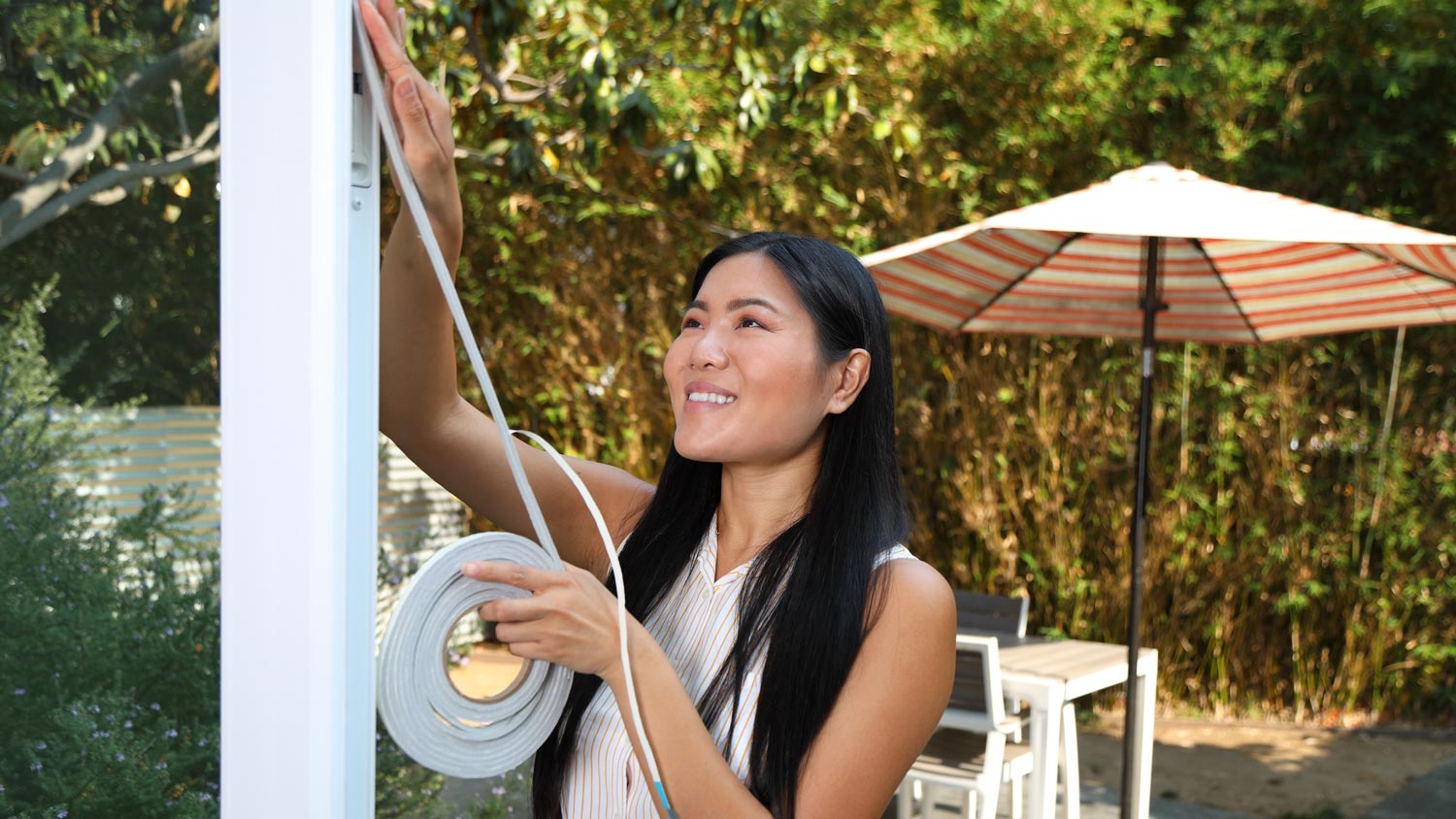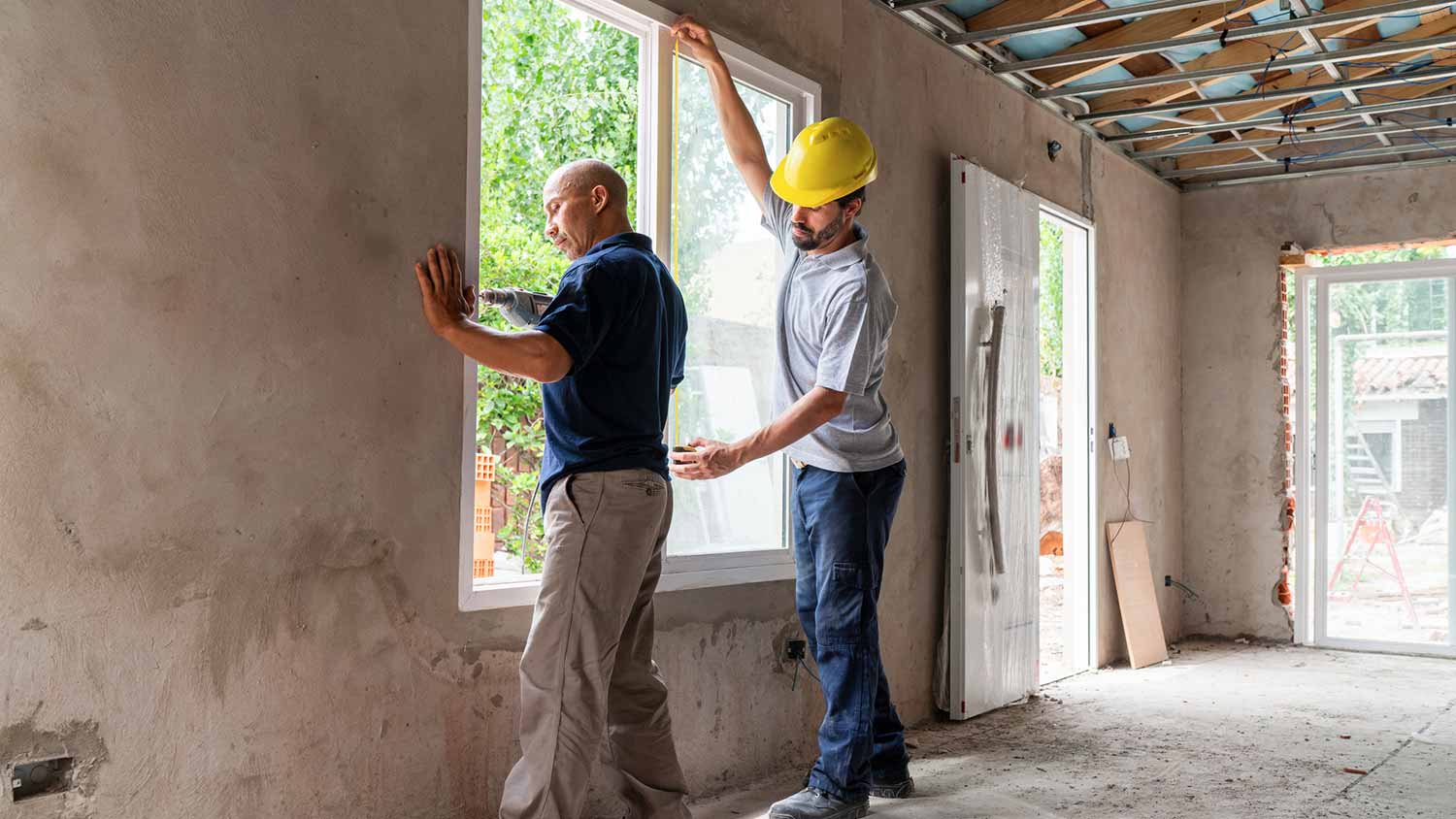
Find out the cost to replace weatherstripping. Learn about material and labor costs, cost-saving tips, and what impacts your total price.
Don’t throw your time and money out the window


New windows can increase your home’s value, improve its energy efficiency, and provide heightened security. Replacing all the windows in your home is a major project—it’s expensive and complex. To ensure you keep costs down and don’t miss an important step, use our window installation checklist for before, during, and after the installation.
When you decide it’s time to replace the windows throughout your home (or in a single room), it’s not simply a matter of going to the home improvement store and putting a few windows in your cart. Rather, you need to do your due diligence to find the best windows for your home.
Here are some things to consider before buying windows:
What style of window best suits your home?
What types of windows do you need in various rooms?
What frame material do you prefer?
Do any of the window openings need to meet egress window requirements? If so, what are those?
How important are energy-efficient windows to you? Do you want to buy high-efficiency windows with energy-efficient glass?
Do you also want storm windows?
Do you live in an area that requires specialty windows, such as hurricane windows?
What is your budget? How much can you afford to spend on all the windows, plus labor costs?
This list of questions can be overwhelming if you aren’t a window expert. But that’s where a consultation comes in.

Unless you are an experienced home remodeler, we highly recommend working with a professional, well-reviewed window installer. To ensure you get the best deal, get quotes from at least three companies.
Here’s how to hire the best window replacement contractor for the job:
Ask friends, family, neighbors, and coworkers for recommendations.
Search for window installers near you online. Read customer reviews before choosing a company. Narrow the list down to at least three.
Ask each company for a background check, a reference list, or a portfolio of past work.
Ask each installer for proof of licensure, certification, and insurance.
Ask all the contractors about their timelines to ensure the company you select can install the windows within your desired timeframe. Make sure the installer lets you know when they can begin work and how long they estimate it will take.
Ask each installer what permits are necessary. If permits are required, ask the contractor if they will obtain the permit on your behalf and if the cost of the permit is reflected in the quote.
Ask each company who disposes of the old windows. If the contractor takes care of the disposal, ask if the cost of junk removal is built into the quote.
Ask the contractors about the payment timeline. How much would be due upfront, and how are the rest of the payments billed?
While you are vetting window installers, you can also ask for their recommendations on the right window types, styles, sizes, and features, if you’re not sure how to decide on your own. During the consultation, the installers will likely need to measure each window, so make sure each area of your home is accessible.
Your window installer may give you a window installation checklist so you know how to prepare before the labor begins. If not, here are some general items you should do before the installers show up to install the new windows:
Check in with your contractor a few days before installation to ensure everything is still good, including the start and end date.
Take down all blinds, curtains, and shades from the window openings.
Disable any alarms that are tied to the windows.
Move furniture away from the windows so the contractors have room to work. Outside, move lawn furniture, equipment such as hoses, and any decor out of the way.
Cover your furniture, appliances, electronics, and other items with drop cloths or blankets, or move them out of the room entirely. Outside, you’ll want to cover delicate plants; if the installation takes multiple days, uncover them each evening when the contractor leaves so the plants can still get their necessary sunlight. Trim any overgrown shrubs that might make accessing the windows a challenge.
Arrange for a babysitter and pet sitter, if needed. Otherwise, you may need to use baby gates or other methods to contain little ones and pets in certain areas of your home during the installation.
You can take time off or work from home. If you work from home, reschedule meetings for the week before or after the installation. The work can get noisy at times.

Most homeowners should not attempt window installation on their own. This is a highly complex project, and incorrect installation could lead to a host of issues, including energy loss, water damage, pest invasions, and home security issues.
Hiring a professional does make installation more expensive; on average, labor for window replacement costs $100 to $300 per window, though contractors may express it as an hourly rate ($50 to $65 an hour). It’s money well spent, however; it saves you from having to do grueling, time-consuming work and ensures correct installation.
Plus, if the contractor does make a mistake during the installation, it should be covered under a warranty. If you, as a homeowner, mess up the installation, however, the warranty would not apply.
If you think you’re up for the challenge, here’s how to install replacement windows on your own.
Once the contractor has finished, use this final window installation checklist to ensure everything works properly:
Test the operation of every window, including opening and closing, securing via a lock, and, if relevant, removing and installing screens.
Do a visual inspection to ensure the windows look good both inside and out. Check for any gaps, and make sure the windows are all level.
Feel the air around the windows (inside) to test for any leaks or drafts.
Make sure all debris has been removed, if your contract calls for this.
Once the contractor has left, make sure you do the following the same day and over time:
Clean the window if any got dirty or smudged during installation.
Put the rooms back together by putting furniture and appliances back in place.
Arrange to pay your final bill if you still owe money to the contractor.
Keep an eye on your utility bill to ensure there are no major spikes in subsequent months; a noticeable spike could indicate an issue with the window installation.
Watch your windows the next time it rains to make sure water isn’t getting in.
Apply for any relevant tax credits for energy-efficient windows when filing taxes.
Keep up with basic window maintenance to ensure your windows operate smoothly and efficiently for years to come. Windows can last anywhere from 15 to 50 years, depending on the type of window, when properly maintained.
From average costs to expert advice, get all the answers you need to get your job done.

Find out the cost to replace weatherstripping. Learn about material and labor costs, cost-saving tips, and what impacts your total price.

Window replacement costs in Dallas, Texas, are lower than the national averages, even when investing in energy-efficient types to keep you cool in hot summers.

Window repairs can protect your home from the elements and avoid ongoing damage. Learn about window repair costs in Dallas, Texas, to budget accurately.

This glass weight calculator estimates how much your glass weighs so you can determine the support you need for installing windows and mirrors.

Not sure how to protect skylights from hail? We’re breaking down how you can DIY your way to a safer home by ensuring hail doesn’t damage skylights.

Deciding how to frame your view is important. Learn about how replacement vs new construction windows compare so you can choose the right fit for your home.